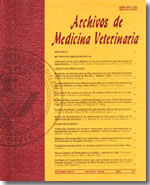Histamine formation and microbiological changes in endemic Chalcalburnus tarichi Pallas 1811 (Inci Kefali) stored at 4 °C
Main Article Content
Abstract
Histamine accumulates in food via microbial decarboxylation of histidine. Small amounts of histamine naturally occurring in food under normal circumstances do not pose a public health hazard. Certain microbial species such as Enterobacteriaceae and Pseudomonas spp. have considerable capacity for histamine formation and can proliferate during handling or processing of foodstuffs, possibly elevating the histamine content to a harmful level. The objective of this study was to measure the formation of histamine and microbiological changes in fresh Chalcalburnus tarichi from Van lake and stored at 4 °C for up to 15 days. Fish muscle samples were taken on day 1,3,5,7,9,11,13 and 15 of experiment, during storage. Histamine content was determined using a spectrofluorometric method and the total count and features of Enterobacteriaceae and Pseudomonas spp. present in the samples were established by standard microbiological procedures. The initial concentration of histamine was 27.5 mg/kg, increasing gradually up to 134.38 mg/kg on day 15. Total viable bacterial count varied from 8.0 x 102to 9.0x109 cfu/g. Enterobacteriaceae was in the 2.0 x 102 to 6.5 x 109 cfu/g range, while Pseudomonas spp. was in the 3.0 x 102 to 7.3 x 109 cfu/g range.

